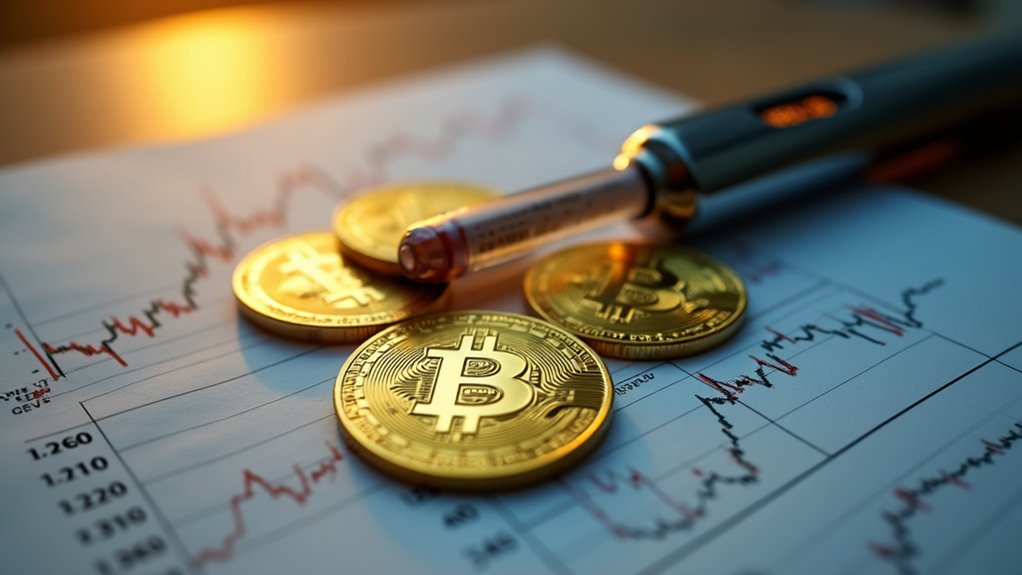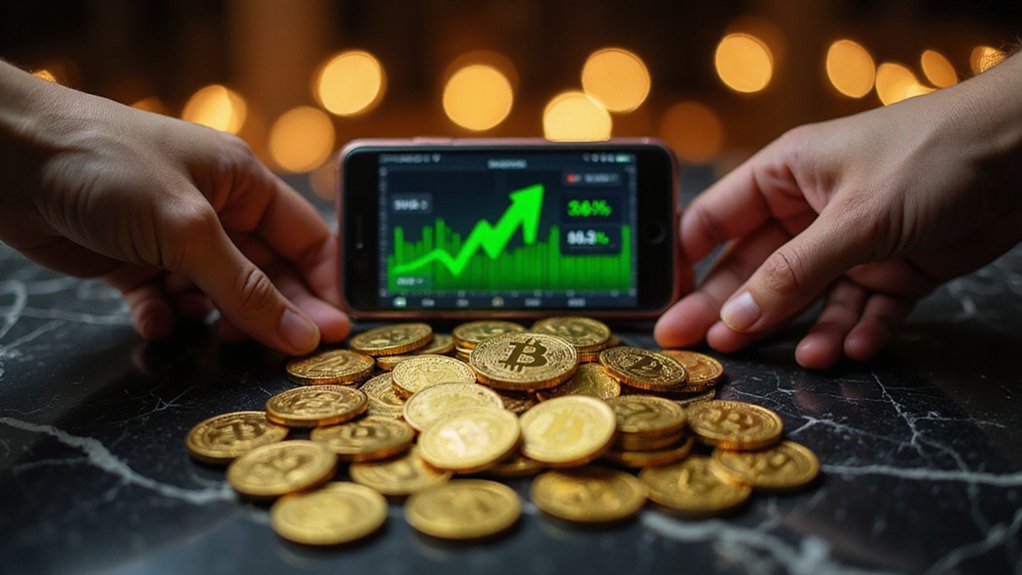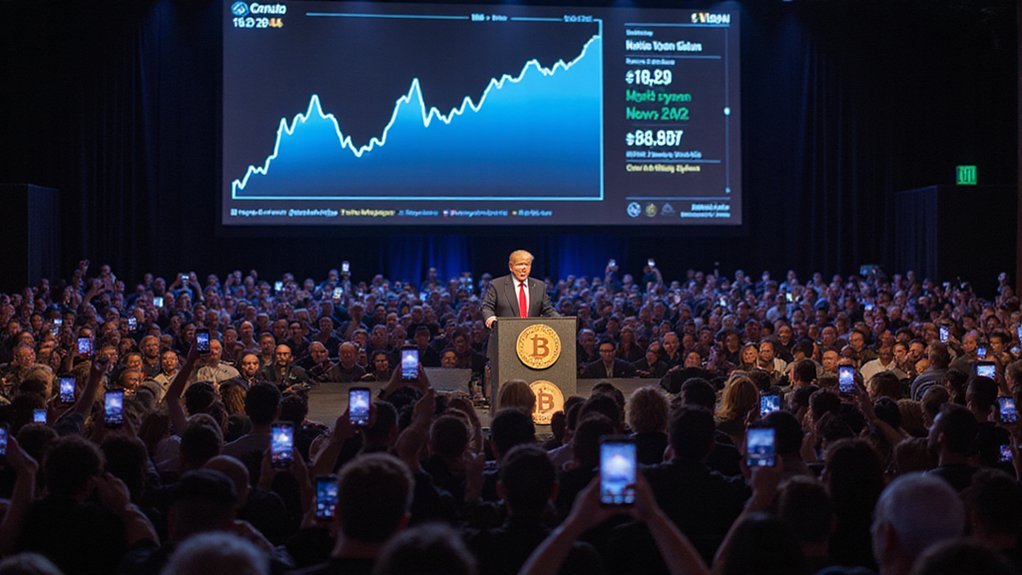Federal Reserve Chair Jerome Powell’s recent commentary on monetary policy has sent cryptocurrency markets into their familiar state of euphoric speculation, with Bitcoin surging 5% and Ethereum climbing 13% as traders interpreted his carefully calibrated remarks about “balanced risks” as the opening salvo of an easing cycle.
Powell’s assessment reveals inflation’s peculiar journey from post-pandemic villain to manageable nuisance, declining considerably from its peak while remaining stubbornly elevated. The Fed’s restrictive stance—that blunt instrument of monetary policy—has successfully dampened inflationary pressures, though policymakers maintain their cautious posture with the persistence of seasoned skeptics who’ve witnessed too many false dawns.
Inflation has transformed from post-pandemic menace to stubborn irritant, leaving Fed officials wielding their blunt monetary tools with hard-earned wariness.
The shift from upside inflation risks to a more balanced outlook has created space for policy recalibration, with Powell hinting at potential rate reductions as early as September 2025 without committing to anything resembling a timeline. Market participants, ever keen to divine meaning from Fed-speak, have assigned a 75% probability to September cuts according to CME FedWatch—a figure that reflects both sophisticated analysis and wishful thinking in equal measure.
Cryptocurrencies have emerged as unlikely beneficiaries of this monetary theater, with digital assets suddenly reimagined as inflation hedges and liquidity plays. Bitcoin’s resilience throughout the tightening cycle has reinforced its evolving narrative, while the prospect of easier monetary conditions has rekindled interest in crypto as diversification tools amid policy uncertainty. Ethereum’s dramatic surge has pushed it tantalizingly close to its all-time high of $4,878 established in November 2021.
The market’s response has been characteristically exuberant, with total crypto capitalization exceeding $4.1 trillion—a figure that would have seemed fantastical just years ago. Analysts detect a “pivot” from inflation hawkishness toward growth concerns, interpreting Powell’s balanced approach as validation for risk assets generally and crypto specifically. Underlying this shift is the reality that GDP growth has slowed to just 1.2 percent in the first half of the year, signaling a broader economic deceleration that may necessitate policy accommodation.
Yet beneath the euphoria lurks familiar warnings about social media-driven excitement potentially marking local market tops. The Fed’s delicate balancing act—managing inflation while preserving labor market strength—creates an environment where crypto’s appeal as both hedge and speculation vehicle continues evolving. Meanwhile, the emergence of meme coins as a rapidly growing sector within cryptocurrency markets demonstrates how social media virality can drive significant price movements and attract diverse market participants.
Powell’s vision, whether intentionally or not, has positioned digital assets at the intersection of monetary policy and market psychology, where fortunes are made and lost on the subtle inflections of central banker prose.









